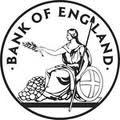Tag: Bank of England Updates

Bank of England quarterly inflation report summary
No need to panic about interest rate rises as we are still in a bad place, but an improving place economically.
Yes “Forward...

Bank of England Inflation Report and Economic Roundup
“When is the Bank of England base rate going up?” is the most frequent question I am asked by property investors. Not this...

Agents’ summary of business conditions April 2012
The Bank of England has released its Agents’ summary of business conditions April 2012, and they believe the housing market to...

First drop in buy to let lending for two years
Demand for buy to let lending has dropped for the first time in two years, according to the latest Bank of England lending survey.

Agents’ Summary of Business Conditions – January 2012
The Bank of England has released the Agents’ Summary of Business Conditions for January 2012, calling the market ‘subdued’.

Bank Rates Stay at 0.5% – But New Mortgages Cost More
The Bank of England has kept the base rate at 0.5% and pegged quantative easing at the previously agreed £275 billion.
The decision...

Bank of England Agents’ summary of business conditions De...
The Bank of England Agents’ summary of business conditions December 2011 has been released, reporting a “softening housing...





